An Excel worksheet contains a massive number of cells. If there is little data in the document and all of them are compactly placed in the upper left corner of the document, problems with determining the address of the currently active cell, as a rule, do not arise. However, it is often helpful, and sometimes just necessary, to quickly determine which cell is active. Helpful hints can be found in the name field in the formula bar, which is by default just below the ribbon on the left.

This field displays the address of the active cell. In the figure above, cell A1 is active. Therefore its address is displayed on the left in the corner above the working area.
However, in addition to such an implicit visual utility, the name field is a somewhat functional element of the interface. If you enter a cell address in the name field, this cell will become active. In the figure below in the name field, enter the address of cell C2 (with active cell A1).
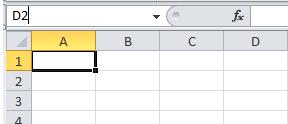
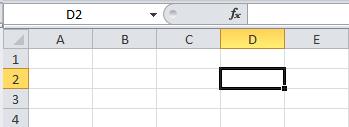
After pressing the <Enter> key, cell C2 becomes active.
The same is the case with the allocation of ranges. In figure below shows how the address of a range of cells A2: D3 is entered in the name field.
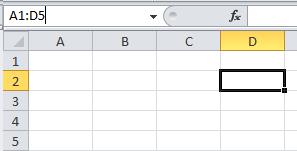
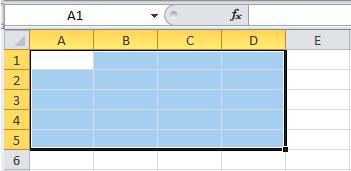
Pressing the <Enter> key leads to the selection of this Range.
In this case, the Range’s address of the upper-left cell is displayed in the name field. Let’s leave the range A2: D3 active and do the following procedure: enter the word Range in the name field.
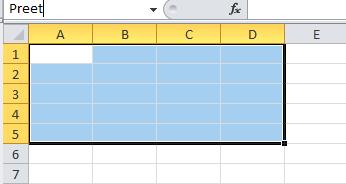
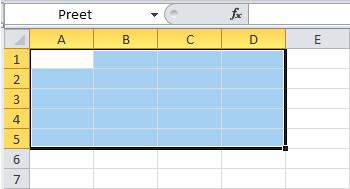
After pressing the <Enter> key, the range A1:D5 will become named, and, as you might guess, the name of this Range will be the word Range entered in the name field. The latter is easy to verify. It is enough to select a range of cells.
A1: D5… In the name field, instead of the address of the upper-left cell of the Range, its name will be displayed.
Cells can also be named. In the figure below, when cell B2 is active, the name Cell is entered in the name field.
When a cell is selected, its name is displayed in the name field if it has one.
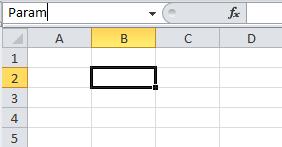
 Moreover, if you click on the icon with an arrow on the right side of the name field, a list of named cells and ranges will open.
Moreover, if you click on the icon with an arrow on the right side of the name field, a list of named cells and ranges will open.
After choosing a name from the list, we go to the corresponding cell or Range.
![]()
 To navigate to named cells and ranges, you can enter a name in the name field just as you entered an address previously. If the name already exists, the corresponding area will be highlighted. Otherwise, the entered name will be assigned to the currently active cell or Range of cells. The above way of naming cells and ranges is not the only one. Also, Excel can even give proper names to formulas.
To navigate to named cells and ranges, you can enter a name in the name field just as you entered an address previously. If the name already exists, the corresponding area will be highlighted. Otherwise, the entered name will be assigned to the currently active cell or Range of cells. The above way of naming cells and ranges is not the only one. Also, Excel can even give proper names to formulas.
 Dinesh Thakur holds an B.C.A, MCDBA, MCSD certifications. Dinesh authors the hugely popular
Dinesh Thakur holds an B.C.A, MCDBA, MCSD certifications. Dinesh authors the hugely popular